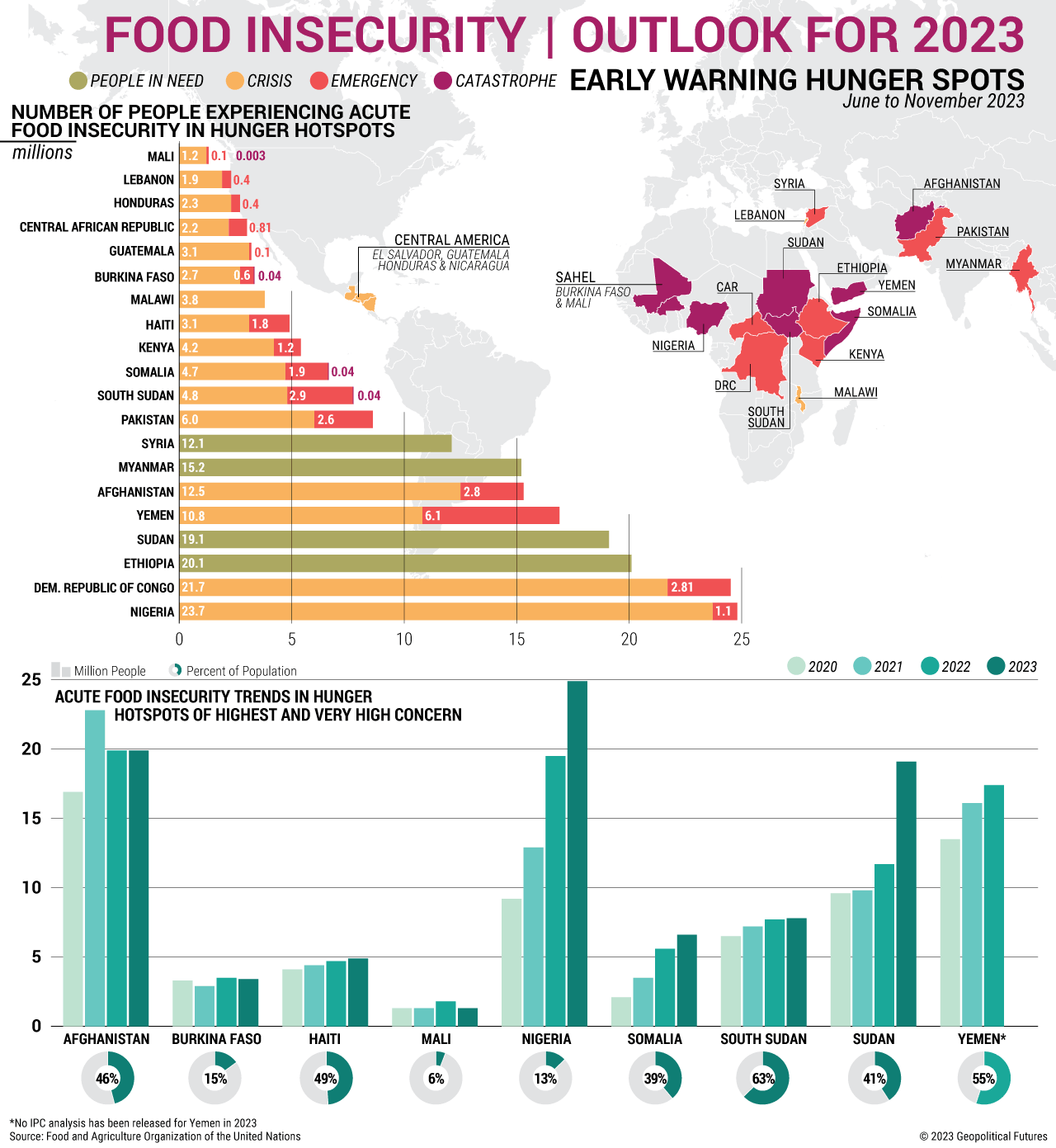Geopolitical Futures
Over the course of 2022, global food prices gradually began to ease. However, this wasn’t necessarily reflected in prices at local markets in countries experiencing food insecurity. Countries that rely on food imports and have low foreign reserves are at greatest risk of seeing a lack of access to food. Costly agricultural input materials, labor and energy also contribute to high food costs.
Notably, the food gap between advanced and developing economies is growing. Developed countries tend to have stronger currencies and better access to credit, meaning food supplies and input materials are generally more affordable and accessible than in developing economies. The most vulnerable countries, however, are often forced to work with institutions like the International Monetary Fund to secure financing to pay for imports. Different countries have varying degrees of success in these negotiations, but it’s generally a challenging path as meeting IMF requirements is for many governments constrained by political considerations at home.

No comments:
Post a Comment